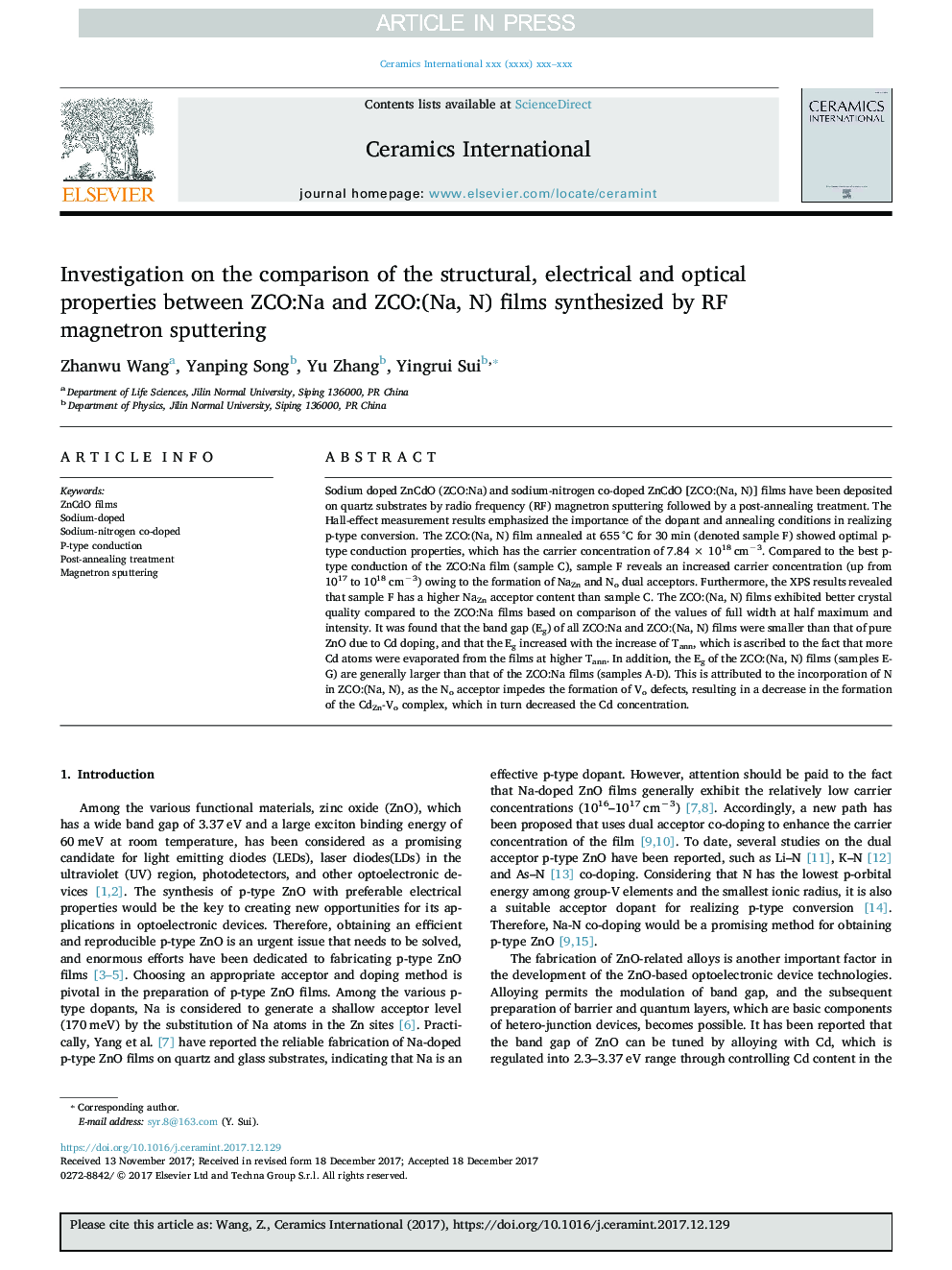| کد مقاله | کد نشریه | سال انتشار | مقاله انگلیسی | نسخه تمام متن |
|---|---|---|---|---|
| 7888484 | 1509793 | 2018 | 7 صفحه PDF | دانلود رایگان |
عنوان انگلیسی مقاله ISI
Investigation on the comparison of the structural, electrical and optical properties between ZCO:Na and ZCO:(Na, N) films synthesized by RF magnetron sputtering
دانلود مقاله + سفارش ترجمه
دانلود مقاله ISI انگلیسی
رایگان برای ایرانیان
کلمات کلیدی
موضوعات مرتبط
مهندسی و علوم پایه
مهندسی مواد
سرامیک و کامپوزیت
پیش نمایش صفحه اول مقاله

چکیده انگلیسی
Sodium doped ZnCdO (ZCO:Na) and sodium-nitrogen co-doped ZnCdO [ZCO:(Na, N)] films have been deposited on quartz substrates by radio frequency (RF) magnetron sputtering followed by a post-annealing treatment. The Hall-effect measurement results emphasized the importance of the dopant and annealing conditions in realizing p-type conversion. The ZCO:(Na, N) film annealed at 655 °C for 30 min (denoted sample F) showed optimal p-type conduction properties, which has the carrier concentration of 7.84 à 1018 cmâ3. Compared to the best p-type conduction of the ZCO:Na film (sample C), sample F reveals an increased carrier concentration (up from 1017 to 1018 cmâ3) owing to the formation of NaZn and No dual acceptors. Furthermore, the XPS results revealed that sample F has a higher NaZn acceptor content than sample C. The ZCO:(Na, N) films exhibited better crystal quality compared to the ZCO:Na films based on comparison of the values of full width at half maximum and intensity. It was found that the band gap (Eg) of all ZCO:Na and ZCO:(Na, N) films were smaller than that of pure ZnO due to Cd doping, and that the Eg increased with the increase of Tann, which is ascribed to the fact that more Cd atoms were evaporated from the films at higher Tann. In addition, the Eg of the ZCO:(Na, N) films (samples E-G) are generally larger than that of the ZCO:Na films (samples A-D). This is attributed to the incorporation of N in ZCO:(Na, N), as the No acceptor impedes the formation of Vo defects, resulting in a decrease in the formation of the CdZn-Vo complex, which in turn decreased the Cd concentration.
ناشر
Database: Elsevier - ScienceDirect (ساینس دایرکت)
Journal: Ceramics International - Volume 44, Issue 5, 1 April 2018, Pages 5219-5225
Journal: Ceramics International - Volume 44, Issue 5, 1 April 2018, Pages 5219-5225
نویسندگان
Zhanwu Wang, Yanping Song, Yu Zhang, Yingrui Sui,